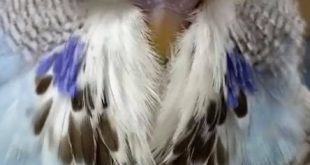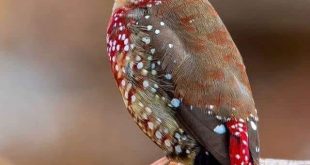Hay guys! We hope you are finding accurate budgies’ mites information, so welcome to here. As you know, budgies are very common birds in our society, and mostly they suffer from parasites such as scaly mites. These tiny parasites can cause health complications and discomfort if left untreated.
How do budgie mites appear on their tiny feathers?
Actually, budgie mites are tiny parasites with various species, most of them are common, like scaly mites and air sac mites.
First of all, we want to share that overcrowded living conditions and poor hygiene can cause the spread of mites among budgie parakeets.
Budgies may come into contact with contaminated surfaces, other diseased birds, or even colonies of wild birds that carry these mites.
Furthermore, budgies that have compromised immune systems as a result of stress, malnourishment, or other underlying medical conditions may be more vulnerable to mite infestations.
Birds typically contract the virus shortly after hatching, either from their parents or in their nest. If older birds come into close contact with diseased birds, they may contract the infection.
Symptoms of Budgies Mites
You should keep an eye on the condition and behaviour of your budgies in your daily life; observe deeply the activity of your lovely budgies. There are some of the most common budgie mites’ symptoms, such as:
Feather loss: if you feel that your budgies are getting plucking their feathers around their nose and beak, it confirms they are affected by scaly mites. Most of these types of birds look so scruffy physically, rubbing their beaks and faces with cages and perch.
Itching and irritation: as we mentioned above in paragraph, budgies do biting, may exhibit increased scratching due to itching and irritation by mites.
Appear Scaly Skin: Crusty sores may appear on infected budgies, especially in the areas surrounding the feet, legs, cere, and beak. Scaly leg mites or scaly face mites are the names for these conditions.
Respiratory Issues: In cases of air sac mite infestation, budgies may experience respiratory problems such as wheezing, coughing, or laboured breathing.
Behavioural Changes: Mite-infested budgies may display changes in behaviour, such as decreased activity levels, loss of appetite, and increased aggression or irritability.
How many common types of Budgies Mites?
There are two different kinds of parasite mites that can infect budgies: air sac mites and scaly mites. Each form of mite has its own symptoms and health consequences. The following summarises the distinctions between scaly mites and air sac mites in budgies:
Air Sac mites
Affected Area: The trachea and air sacs of budgies are the main respiratory systems that are infested with air sac mites.
Symptoms: Air sac mite-affected budgies may have respiratory problems, including coughing, sneezing, wheezing, and difficult breathing. The severity of these symptoms can vary according on how far along the infestation is.
Diagnostic Challenges: Air sac mites are microscopic and not easily visible to the naked eye.A veterinarian must usually undergo an endoscopy or tracheal wash to get samples for microscopic analysis in order to make a diagnosis.
Therapy: Using antiparasitic drugs that a veterinarian has prescribed is a common treatment for air sac mites. Depending on the extent of the infestation, these drugs may be injected, applied topically, or taken orally.
Scaly Mites
Affected Area: Budgies’ skin and feathers are mostly affected by scaly mites, especially in the areas surrounding the face, beak, cere, legs, and feet.
Symptoms: The signs of scaly mite infestation in budgies can include crusty sores, scaliness, and feather loss in the afflicted areas. An infestation may cause the bird to feel uncomfortable, itch, and get irritated.
Visible Signs: When closely examining the affected regions, scaly mites are frequently visible to the unaided eye.ascaly mite infestation may manifest as crusty sores and irregular skin texture.
Treatment: Topical drugs or sprays administered directly to the afflicted regions are usually used to treat scaly mites. Insecticides or acaricides may be present in these drugs to eradicate the mites and reduce symptoms. Veterinarian intervention or oral medication may be required in severe situations.
Scaly mites generally infest the skin and feathers of budgies, resulting in skin lesions and abnormalities in the feathers, whereas air sac mites mostly damage the respiratory system, producing respiratory problems.
In order to manage mite infestations of any kind and maintain the health and wellbeing of budgies, a veterinarian’s proper diagnosis and treatment are important.
How can budgie mites be removed?
In order to eradicate budgie mites successfully, a diverse strategy is frequently required:
Cleanliness & quarantine: To stop the mites from infecting other birds, quarantine afflicted budgies. To get rid of mites and their eggs, give cages, perches, toys, and other accessories a thorough cleaning and disinfection.
Veterinary Intervention: For advice on appropriate diagnosis and treatment, speak with a veterinarian. They may give topical treatments, oral drugs, or propose environmental management measures to remove mites.
Medication and Sprays: Follow your veterinarian’s instructions when applying prescribed drugs or mite sprays. When utilising sprays, make sure you have enough ventilation and take safety steps to prevent inhalation or skin contact.
Nutrition and Stress Reduction: To strengthen your budgie’s immune system, provide it a well-balanced diet full of vital nutrients. Reduce stressors like crowded conditions, abrupt changes in the surroundings, or hostile interactions with other birds.
Frequent Observation: Keep a close eye on your bird’s health and contact a veterinarian if symptoms don’t go away or get worse after therapy.
Is It Possible to Recognise Budgie Mites From Pictures?
Pictures can serve as visual aids for budgie mite infestations, but it’s important to keep in mind that a trained veterinarian is the only one who can accurately diagnose the condition.
For an accurate diagnosis and treatment, it’s preferable to seek professional veterinarian care if you believe your budgie may have mites based on symptoms or visual signals.
Final Paragraph
If budgie mites are not removed right away, pet birds may be at serious health risk. Through knowledge of budgie mite causes, symptoms, and treatment choices, pet owners may prevent problems before they arise and guarantee an enjoyable and healthy existence for their feathered companions.





